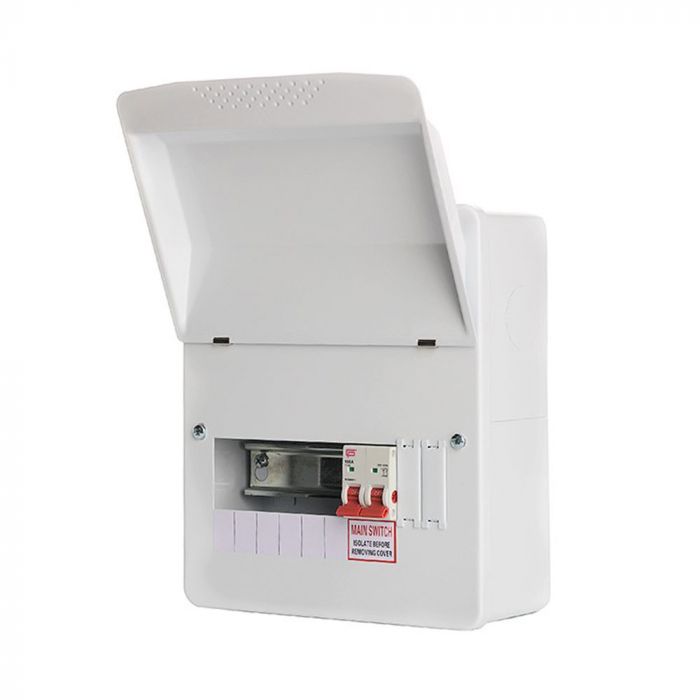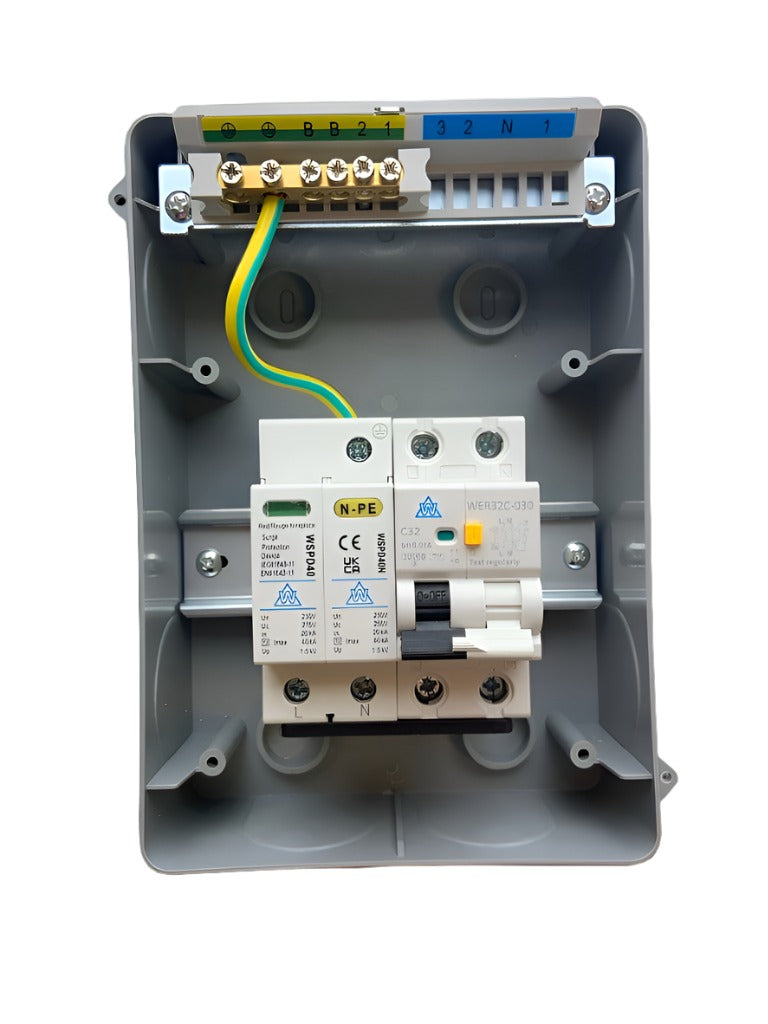Checking Out the most up to date Advancements in RCBO CONSUMER UNITS Modern Technology
Checking Out the most up to date Advancements in RCBO CONSUMER UNITS Modern Technology
Blog Article
The Role of Customer Devices in Effective Power Administration Equipment
Consumer devices are essential to efficient power management systems, offering as the key circulation factors for electric power within structures. The arrival of wise technologies has actually additionally enhanced their capability, allowing for real-time information monitoring and nuanced power consumption analysis.
Understanding Consumer Units

Comprehending the duty of customer systems begins with recognizing their necessary feature in guarding electrical systems. By isolating mistakes within details circuits, consumer units avoid prevalent outages and potential fire risks. This seclusion is accomplished through using breaker that trip or fuses that blow when a mistake is detected, thus removing the electrical circulation to the affected circuit.
Additionally, customer systems facilitate the orderly distribution of power, improving the effectiveness of power use. They enable the methodical management of electric tons, which can be especially vital in industrial and industrial settings where need can vary dramatically. Correctly maintained consumer systems add to the long life of electrical systems and assist in decreasing downtime caused by electric failures, ultimately supporting the seamless operation of energy-dependent centers.
Smart Technologies Combination

A vital benefit of clever customer devices is their capability to take advantage of advanced formulas and device knowing for predictive analytics. This permits for preemptive modifications based on use patterns, weather prediction, and various other variables, significantly boosting overall performance. Furthermore, smart customer devices facilitate demand action programs, where energy usage can be dynamically changed during peak periods to maintain the grid and decrease expenses.
The assimilation of renewable resource resources, such as solar and wind, is also structured through clever customer devices. By intelligently taking care of the intermittency of these sources, these units ensure a dependable and well balanced energy supply. In addition, wise customer units boost customer engagement by giving detailed insights and push-button control capabilities through mobile applications, promoting a more positive technique to power preservation and sustainability.
Tracking Power Usage
Structure on the capabilities of smart innovations assimilation, keeping an eye on power usage comes to be a crucial focus within energy monitoring systems. By leveraging sophisticated metering framework (AMI), real-time information on energy use can be accumulated at granular degrees, offering valuable understandings into consumption patterns and peak need periods.
Smart meters and Web of Points (IoT) devices play an essential function in this surveillance procedure. These gadgets can track power usage in real-time, transferring data to central systems for evaluation.
The integration of these innovations not just encourages customers with in-depth details regarding their energy use yet likewise sustains utility suppliers in taking care of tons circulation more effectively. Inevitably, specific and constant surveillance is vital for achieving power performance, cost savings, and sustainability objectives within energy administration systems.
Optimizing Appliance Use

One efficient method involves recognizing peak and off-peak hours to move energy-intensive activities, such as washing or dishwashing, to times when energy need is reduced. This not only decreases pressure on the grid but also utilizes on reduced energy tolls. In addition, incorporating artificial intelligence algorithms permits anticipating maintenance, making certain appliances run at optimal effectiveness and lengthening their life-span.
Power monitoring systems can likewise include user-specific preferences and actions to tailor home appliance usage timetables. For example, clever illumination systems can readjust brightness based upon tenancy and natural light accessibility, while a/c systems can maintain convenience levels without extreme energy use.
Promoting Sustainability
Advertising sustainability within energy monitoring systems involves not only improving performance but additionally fostering eco responsible techniques. Customer units are essential to this procedure, as they offer real-time information and control mechanisms that allow users to keep an eye on and minimize their energy intake. By leveraging sophisticated modern technologies, customer systems can identify energy-saving opportunities and promote the combination of renewable resource sources like solar and wind power.
One essential element of promoting sustainability is enlightening consumers on the advantages of responsible power use. Via thorough insights offered by customer systems, users can make enlightened decisions that reduce their carbon her explanation impact. As an example, these devices can suggest optimal times for operating high-energy appliances based on grid demand and renewable energy schedule, thereby reducing dependence on fossil gas.
Moreover, consumer units sustain the fostering of clever grid modern technologies, which boost the overall effectiveness and dependability of energy circulation. By allowing two-way communication between customers and energy carriers, these systems can dynamically change to energy demands, reducing waste and advertising making use of sustainable power techniques.
Verdict
Customer devices, as important elements of energy management systems, considerably enhance electric safety and security and effectiveness within structures via circuit security and smart modern technology integration. Additionally, the incorporation of sustainable energy sources promotes lasting techniques, adding to minimized overall power consumption and reduced carbon impacts.
Breakthroughs in wise technologies have actually revolutionized the capabilities of power management systems, particularly via the integration of smart customer units.Building on the capacities of wise technologies assimilation, keeping an eye on energy consumption ends up being an important focus within power monitoring systems.Reliable home appliance usage optimization is a critical part of power administration systems, intending to enhance performance and lower unneeded energy usage.Customer systems, as important elements of energy management systems, substantially boost electric security and effectiveness within buildings through circuit protection and clever innovation assimilation. Additionally, the useful source unification of renewable power resources promotes sustainable methods, contributing to minimized overall energy usage and lower carbon footprints.
Report this page